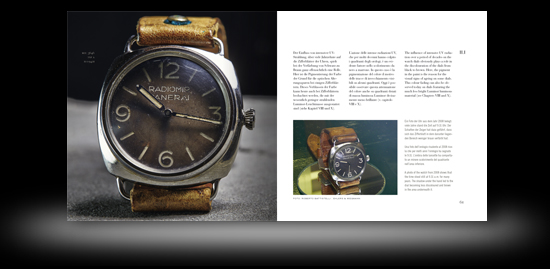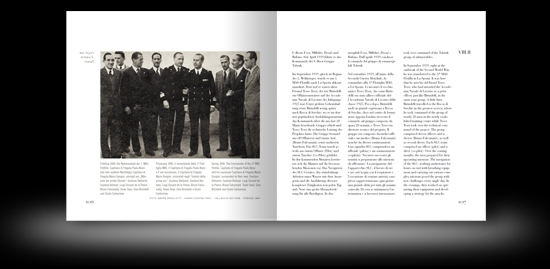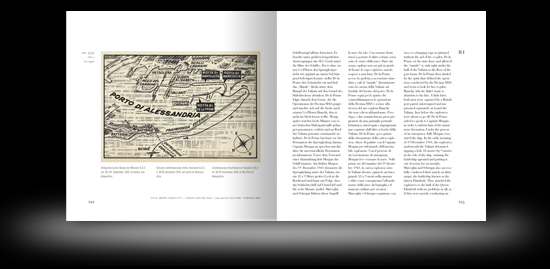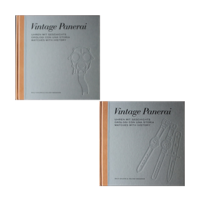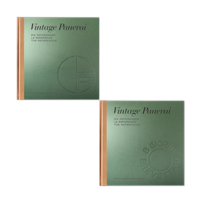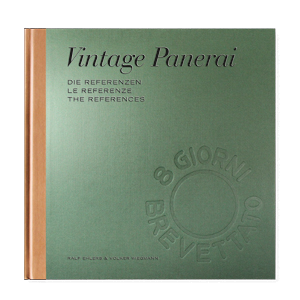Author Archive
Reading a frogman’s battle report…
by Volker on Mar.19, 2025, under Allgemein
One of the rarest historical documents which we came across during the research of our book “History2”: a handwritten battle report of a frogmen mission at the Pomeranian coast, dated April 3rd, 1945.
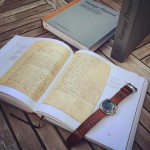 Documents from the last weeks of the Second World War are today, without a doubt, very hard to find – if existing after more than 70 years at all… With the support of the family of the German “Kampfschwimmer”, who once wrote this report after he returned safely from the combat zone, we were able to include this battle report (page 672-673 shown on the coffee table shot on the left) in chapter VII of “History2” (featuring the chapters V-IX with a total of 480 pages).
Documents from the last weeks of the Second World War are today, without a doubt, very hard to find – if existing after more than 70 years at all… With the support of the family of the German “Kampfschwimmer”, who once wrote this report after he returned safely from the combat zone, we were able to include this battle report (page 672-673 shown on the coffee table shot on the left) in chapter VII of “History2” (featuring the chapters V-IX with a total of 480 pages).
Interesting details in his handwritten battle report are the times which he mentioned aside other details, all easily readable on the sandwich dial of the Ref. 3646 / Type D (with 5 minute markers / indices) he was wearing during the mission: He wrote down 21:50, 23:30, 23:45, 23:50-0:30 and finally 2:05 AM – the moment he left the waters – after 4:15 hours trying to attack the Wollin railroad bridge together with a group of four frogmen from the “Einsatzgruppe Keller”, towing two mines thru the waters of the Dievenow.
One of these five frogmen is featured in our book “History1”. Several pages of his diary are published in chapter II, where he wrote down what happened during the frogmen attack of the Gristow bridge at the Pomeranian coast (page 134-143).
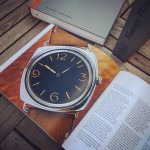 Read more on further rare documents which helped us to capture the history behind the Ref. 3646 / Type D “Kampfschwimmer” watch, shown on the coffee table shot on the left here. Photos from the years 1944 and 1945 showing this watch on the frogman’s wrist, as well as his identification papers and travel documents issued in Venice, helped us to reconstruct the route he took to the mission grounds.
Read more on further rare documents which helped us to capture the history behind the Ref. 3646 / Type D “Kampfschwimmer” watch, shown on the coffee table shot on the left here. Photos from the years 1944 and 1945 showing this watch on the frogman’s wrist, as well as his identification papers and travel documents issued in Venice, helped us to reconstruct the route he took to the mission grounds.
Obviously his handwritten battle report never reached the headquarters but somehow he managed to keep it safe for his personal records, giving us today, more than 70 years later, a detailed inside view on a mission he carried out together with four frogmen at the Eastern Front in April 1945…
Our two “History” books can be ordered only in our bookstore.
Enjoy reading stories behind these watches!
[Ralf Ehlers & Volker Wiegmann]
Inventors, pilots and a royal visitor…
by Volker on Mar.10, 2025, under Allgemein
The first watches for the pilots of the “new weapon” SLC were delivered in the middle of the 1930’s by Guido Panerai & Figlio to the Commando del 1° Gruppo Sommergibili of the Royal Italian Navy. According to the timeline of the development of the top secret slow running torpedos (siluro a lenta corsa, short: SLC) by the inventors Teseo Tesei and Elios Toschi, waterproof and luminous instruments for the pilots were necessary to carry out proper exercises and to control the SLC in depth and darkness.
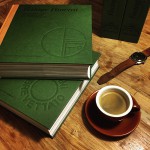 The chapters I and II, dedicated to the first watches for underwater use (Ref. 2533 and 3646) take the readers of our book “The References” 1930’s-1940’s into these early years. Teseo Tesei and Elios Toschi’s ideas became real. But strategic decisions after the Italo-Ethiopian War stopped the secret SLC project. The tests with these small weapons were archived and the Royal Italian Navy focused their interest in huge battleships, cruisers and destroyers.
The chapters I and II, dedicated to the first watches for underwater use (Ref. 2533 and 3646) take the readers of our book “The References” 1930’s-1940’s into these early years. Teseo Tesei and Elios Toschi’s ideas became real. But strategic decisions after the Italo-Ethiopian War stopped the secret SLC project. The tests with these small weapons were archived and the Royal Italian Navy focused their interest in huge battleships, cruisers and destroyers.
The SLC project was re-started by the 1st Flottiglia MAS in 1939 at the advent of the Second World War. With the first missions of the Mezzi d’Assalto carried out from August 1940 onwards, the demand for skilled operators as well as new equipment – and more instruments for the operators – grew fast. An early Ref. 3646 / Type A, dated to April 1940, is featured in chapter II.I followed by the timeline of the missions carried out by the operators of the Decima Flottiglia MAS, the special commandos of the Royal Italian Navy.
 The photo shows page 96 of “The References” with a historic photo from June 1940: The two inventors of the SLC, Teseo Tesei and Elios Toschi, Alberto Franzini and Gino Birindelli above their co-pilots stand together with a royal visitor: Principe Aimone di Savoia Aosta, Duca di Spoleto – just a few weeks before the first missions of the new weapon SLC were about to write naval history.
The photo shows page 96 of “The References” with a historic photo from June 1940: The two inventors of the SLC, Teseo Tesei and Elios Toschi, Alberto Franzini and Gino Birindelli above their co-pilots stand together with a royal visitor: Principe Aimone di Savoia Aosta, Duca di Spoleto – just a few weeks before the first missions of the new weapon SLC were about to write naval history.
Read more about “The birth of a legend – the first Panerai watches (1935-1939)” in chapter I, followed by the timeline of the missions during the Second World War in chapter II.I – more information on the historic content in our “The References” book set with a total of 1392 pages can be found here. Read about the featured watches from Guido Panerai & Figlio in the first and second volume here.
At a glance: The Reference 6152/1
by Volker on Mar.01, 2025, under Allgemein
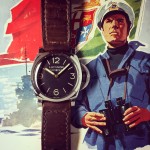 Watches of the Reference 6152/1 are featured in four of the twelve chapters of our book “The References” and are part of the second volume (1950’s-1960’s). The photo shows a 6152/1 with Rolex movement, “Luminor Panerai” dial and crown-protecting device (chapter VIII.II, page 942-955).
Watches of the Reference 6152/1 are featured in four of the twelve chapters of our book “The References” and are part of the second volume (1950’s-1960’s). The photo shows a 6152/1 with Rolex movement, “Luminor Panerai” dial and crown-protecting device (chapter VIII.II, page 942-955).
How do we explain four different versions in our book “The References” 1950’s-1960’s? Watches of the Reference 6152/1 are presented in order of the movement version, the type of winding crown used and sorted chronological by their casing reference number, as follows:
Chapter VIII.I = Reference 6152/1
with Rolex movement and 8 mm Rolex crown
(featuring four different watches on page 878-921).
Chapter VIII.II = Reference 6152/1
with Rolex movement and Panerai crown-protecting device
(featuring ten different watches on page 922-1057).
Chapter X.III = Modified Reference 6152/1
with Angelus movement and 8 mm Rolex crown
(featuring three different watches on page 1212-1259).
Chapter X.IV = Modified Reference 6152/1
with Angelus movement and Panerai crown-protecting device
(featuring four different watches on page 1260-1313).
Each of the four chapters shows the different movement and dial versions recorded in our database with charts, e.g. illustrating the relationship between registered watches with 8 mm Rolex crown and Panerai crown-protecting device of the Reference 6152/1. Additional information on different hands, caseback engravings for different forces which used the watches as well as historical background on two 6152/1 watches first owners can be found, too. Enjoy reading!
Our “The Reference” books are available in our bookstore.
Our database – an interim status on 1 January 2025
by Volker on Jan.22, 2025, under Allgemein
What happened after 1 January 2016 when we “paused” counting new entries in our database for a moment to complete our book set “The References”? We continued to count and still do that – since 2003 (…22 years ago). January 2025 was time to pause again and see how our records have changed in numbers of known watches in our database. The total number of all historic Panerai watches in our database from the 1930’s to the 1960’s has grown to 454 known watches.
Back in 2016 we had 211 entries of the Reference 3646 in our database (seven different number groups, from 3646 / Type A to 3646 / Type G). Since then, 56 watches of the References 3646 have been added into our records, making a total of 267 watches of the reference 3646 today. Find an interim status on 1 January 2025 below:
Reference 2533: 3 examples known (2016: 3)
Reference 3646 / Type A: 18 classified (2016: 18)
Reference 3646 / Type B: 21 classified (2016: 16)
Reference 3646 / Type C: 67 classified (2016: 52)
Reference 3646 / Type D: 108 classified (2016: 79)
Reference 3646 / Type E: 32 classified (2016: 26)
Reference 3646 / Type F: 11 classified (2016: 11)
Reference 3646 / Type G: 10 classified (2016: 9)
Mare Nostrum Chronograph: 1 example known (2016: 1)
The watches made by Guido Panerai & Figlio after the Second World War, those with solid lugs, references 6152, 6154, 6152/1 and GPF 2/56 as well as the transitional references and those with Angelus movements increased from 162 to 183. Most additions are watches of the reference 6152/1 – all four versions (Rolex and Angelus movements, Rolex crown and Panerai crown guard) increased from 103 (2016) to 119 specimen classified in our database on 1 January 2025.
Reference 6152 / Type A: 7 classified (2016: 7)
Reference 6152 / Type B: 2 classified (2016: 2)
Reference 6154: 18 classified (2016: 15)
Reference 6152/1 Rolex with Rolex crown: 24 classified (2016: 23)
Reference 6152/1 Rolex with Panerai crown guard: 75 classified (2016: 64)
GPF 2/56 Angelus: 27 classified (2016: 25)
Reference 3646 Angelus: 5 classified (2016: 5)
Reference 3646 Transitional: 5 classified (2016: 5)
Reference 6152/1 Angelus with Rolex crown: 8 classified (2016: 6)
Reference 6152/1 Angelus with Panerai crown guard: 12 classified (2016: 10)
At this point, again, we want to thank those who shared information on the watches lined up above with us. Auctioneers, collectors, family members of veterans and their friends.
Ralf Ehlers & Volker Wiegmann
A lot to read during the holiday season…
by Volker on Nov.10, 2024, under Allgemein
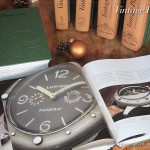 Read about watches and instruments from Guido Panerai & Figlio. Vintage Panerai watches from the 1930’s to the 1960’s are described and photographed in intricate detail for the reader, telling the stories of their first users during their dangerous underwater missions.
Read about watches and instruments from Guido Panerai & Figlio. Vintage Panerai watches from the 1930’s to the 1960’s are described and photographed in intricate detail for the reader, telling the stories of their first users during their dangerous underwater missions.
“History1” (420 pages)
“History2” (480 pages)
“The References” 1930’s-1940’s (696 pages)
“The References” 1950’s-1960’s (696 pages)
As a reference finder, as an addition to your library at home or as a special christmas gift for your friends: our Vintage Panerai books will be a great read for any Panerai collector. Each book comes with an embossed hardback jacket (leather and canvas) in a slipcase, sized 10.2 x 10.2″, trilingual (= German, Italian and English language).
Our four books are in stock and can be shipped immediately – just visit our bookstore. Use the browse by tags function to get further information about the content in each of the four books. Read how to place your order here.
Take your seat and enjoy reading!
[Ralf Ehlers & Volker Wiegmann]
30 October 1940 – today in history…
by Volker on Oct.30, 2024, under Allgemein
1940. The first mission against the Port of Gibraltar (B.G.1) was aborted when it became clear that the British fleet had already left for Operation “Menace”. The transport submersible Scirè under the command of Junio Valerio Borghese was still 50 nautical miles off Gibraltar. Disappointed, the SLC teams returned to their secret base at Bocca di Serchio, where they intensively discussed the feasibility of this type of attack. This happened at the same time when „Operazione G.A.2“ was about to end with the sinking of the transport submersible Gondar.
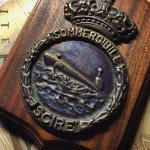 Initial, decisive proof of the feasibility and the successful, secret penetration of enemy ports was achieved by Comandante Borghese and his men in mission B.G.2. Again, three SLCs were dispatched: Teseo Tesei with Alcide Pedretti, Luigi Durand de la Penne with Emilio Bianchi and Gino Birindelli with Damos Paccagnini.
Initial, decisive proof of the feasibility and the successful, secret penetration of enemy ports was achieved by Comandante Borghese and his men in mission B.G.2. Again, three SLCs were dispatched: Teseo Tesei with Alcide Pedretti, Luigi Durand de la Penne with Emilio Bianchi and Gino Birindelli with Damos Paccagnini.
The Scirè came into position at around 1.30 a.m. on 30 October 1940 in order to allow the SLC teams to disembark from the conning tower of the submersible. The Scirè only remained at the surface for a short time so that the three SLC teams could reach the cylindrical pods on the deck of the submersible. The Scirè then retreated back beneath the surface. Under water, the three teams manoeuvred their SLCs out from the pods and started their attack on the Port of Gibraltar. The three teams experienced problems almost as soon as the attack began. While Tesei and his co-pilot Pedretti had problems with their breathing apparatus, Durand de la Penne and his co-pilot Bianchi experienced problems with their electric engine. Both teams decided to abort the attack and sink their SLCs. However, only De la Penne managed to do this. Tesei’s SLC was washed up on the Spanish coast near La Linea and caused quite a stir among both the Spanish authorities and the British secret service. Both teams swam to the Spanish coast and were able to return safely to Italy with the help of the Italian secret service.
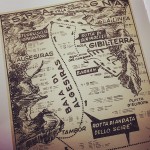 The fate of the entire operation now lay in the hands of Gino Birindelli and his co-pilot Damos Paccagnini. Unaware of the fact that their comrades-in-arms had already had to terminate their mission, they launched their attack on the Port of Gibraltar. Although mission B.G.2 was in principle a failure because not one enemy ship was sunk, Birindelli and his co-pilot Paccagnini were able to prove for the first time that a “maiale” was able to enter an enemy port unnoticed.
The fate of the entire operation now lay in the hands of Gino Birindelli and his co-pilot Damos Paccagnini. Unaware of the fact that their comrades-in-arms had already had to terminate their mission, they launched their attack on the Port of Gibraltar. Although mission B.G.2 was in principle a failure because not one enemy ship was sunk, Birindelli and his co-pilot Paccagnini were able to prove for the first time that a “maiale” was able to enter an enemy port unnoticed.
„Operazione B.G.2“ marked the start of a three year war that took place noiselessly and under water in the Bay of Gibraltar. For Gino Birindelli, however, the mission marked the start of a journey through Allied POW camps that would last many months. Read more on mission B.G.2 and the story of Gino Birindelli in our book “The References” 1950’s-1960’s in chapter VIII.II on page 1014-1043.
Missions and Watches of the Decima MAS
by Volker on May.29, 2024, under Allgemein
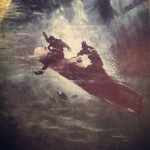 Watches from Guido Panerai & Figlio are deeply connected to the history of the Royal Italian Navy during the Second World War. In our book “The References” we have included an overview of the missions of the “Decima” aside the legendary watches, which were an important part of the units of the underwater (“Mezzi Subacquei” / “Gamma” frogmen and SLC) and surface (“Mezzi di Superficie” / explosive boats) special forces of the Decima MAS (“Mezzi d’Assalto”).
Watches from Guido Panerai & Figlio are deeply connected to the history of the Royal Italian Navy during the Second World War. In our book “The References” we have included an overview of the missions of the “Decima” aside the legendary watches, which were an important part of the units of the underwater (“Mezzi Subacquei” / “Gamma” frogmen and SLC) and surface (“Mezzi di Superficie” / explosive boats) special forces of the Decima MAS (“Mezzi d’Assalto”).
After the disaster at Malta in July 1941 (“Operazione Malta 1”), the Decima MAS was restructured. Capitano di Fregata Ernesto Forza became the new commander of the Decima MAS. The underwater division was given the name of the fallen inventor of the SLC, Teseo Tesei, now commanded by Junio Valerio Borghese. The surface division was given the name of the fallen commander of the Decima, Vittorio Moccagatta, now commanded by Salvatore Todaro (the photo below shows a historical chart of the new structured Mezzi d’Assalto as of October 1941).
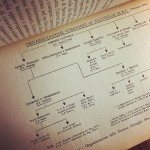 Chapter I and II of the first volume (1930’s-1940’s) carry the history of a new weapon – the SLC slow running torpedo, called “maiale” – and the men who trusted on the watches from Guido Panerai & Figlio during their dangerous missions in deep and darkness of the mediterranean sea. Because of the significance of the fascinating history behind these watches, we have dedicated our book “The References” to the inventors of the SLC, Teseo Tesei and Elios Toschi.
Chapter I and II of the first volume (1930’s-1940’s) carry the history of a new weapon – the SLC slow running torpedo, called “maiale” – and the men who trusted on the watches from Guido Panerai & Figlio during their dangerous missions in deep and darkness of the mediterranean sea. Because of the significance of the fascinating history behind these watches, we have dedicated our book “The References” to the inventors of the SLC, Teseo Tesei and Elios Toschi.
Chapter II of “The References” features some of the rarest Panerai watches owned by famous and high decorated Italian veterans. The first watch of the Reference 3646 / Type A, featured in chapter II.I, belonged to Admiral Ernesto Notari. He was awarded with the Silver Medal for Gallantry at War (M.A.V.M.) for the mission B.G.6 in May 1943.
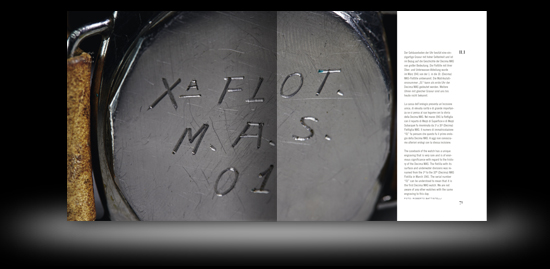
The documentation of the watch (see above page 70-71) and the history of Ernesto Notari, including a summary of the “Mezzi d’Assalto” missions until 8 September 1943 can be read from page 58 to 153 in chapter II.I.
Chapter II.II, about the watches of the Reference 3646 / Type B, features the watch of the legendary “Gamma” frogman Luigio Ferraro. He was awarded with the Gold Medal for Gallantry at War (M.O.V.M.) for his “Stella” missions in the eastern part of the mediterranean sea in 1943.
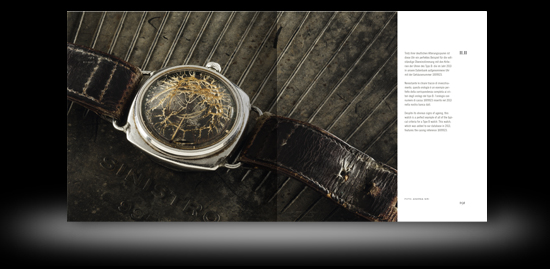
The documentation of the watch (see above page 190-191) and the history of Luigi Ferraro can be read from page 190 to 225 in chapter II.II.
A watch of the Reference 3646 / Type C which belonged to the SLC pilot Licio Visintini is featured in chapter II.III. Visintini took part in several missions against the allied fleet in Gibraltar. After surviving from mission B.G.3 and B.G.4 in 1941, Visintini returned undercover to Gibraltar in June 1942 where he built the core of the “Orsa Maggiore” on board the tanker Olterra – the hidden base for the SLC units of the “Decima” in the bay of Gibraltar. Mission B.G.5 turned into a “mission with no return” for Licio Visintini in December 1942…
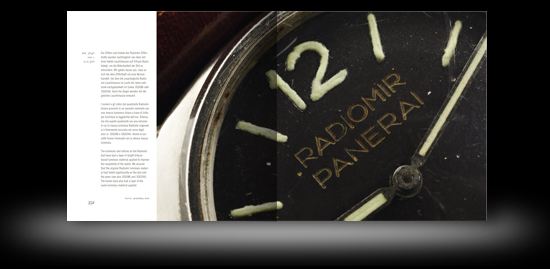
The documentation of the watch (see above page 352-353) and the history of Licio Visintini can be read from page 350 to 397 in chapter II.III.
Information on “The References” 1930’s-1940’s (first volume) can be found here.
Enjoy reading!
[Ralf Ehlers & Volker Wiegmann]
Mezzi d’Assalto
by Volker on Apr.14, 2024, under Allgemein
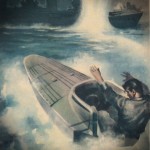 Just a few days before the first success of the MT explosive boats on 26 March 1941 in Souda Bay, the 1st MAS Flotilla changed its name and became the 10th MAS Flotilla – the Decima MAS on 15 March 1941. Capitano di Fregata Vittorio Moccagatta was the new commander and divided the special weaponry – Mezzi d’Assalto – into two divisions:
Just a few days before the first success of the MT explosive boats on 26 March 1941 in Souda Bay, the 1st MAS Flotilla changed its name and became the 10th MAS Flotilla – the Decima MAS on 15 March 1941. Capitano di Fregata Vittorio Moccagatta was the new commander and divided the special weaponry – Mezzi d’Assalto – into two divisions:
The surface division – Mezzi di Superficie – under the command of Capitano di Corvetta Giorgio Giobbe (see photo on page 115, commander Giobbe wearing clearly visible a Panerai watch on his right wrist) had a fleet of various explosive boats (category MT, MTM, MTR, MTS, MTMS, SMA and MTL) for sabotage operations, based in La Spezia.
 The underwater division – Mezzi Subacquei – under the command of Capitano di Corvetta Junio Valerio Borghese operated the diving School in Livorno, the SLC training base at Bocca di Serchio, the transport submersibles (Scirè and Ambra) and the frogmen of the “Gruppo Gamma”.
The underwater division – Mezzi Subacquei – under the command of Capitano di Corvetta Junio Valerio Borghese operated the diving School in Livorno, the SLC training base at Bocca di Serchio, the transport submersibles (Scirè and Ambra) and the frogmen of the “Gruppo Gamma”.
After the desaster at Malta in July 1941 (“Operazione Malta 1”), the Decima MAS was restructured. Capitano di Fregata Ernesto Forza became the new commander of the Decima MAS. The underwater division was given the name of the fallen inventor of the SLC, Teseo Tesei, now commanded by Junio Valerio Borghese. The surface division was given the name of the fallen commander of the Decima, Vittorio Moccagatta, now commanded by Salvatore Todaro. See page 116 with a historical chart of the new structured Mezzi d’Assalto as of October 1941:
Ernesto Notari became commander of the SLC training base at Bocca di Serchio. His Ref. 3646 / Type A “Radiomir Panerai” (with its unique engraved caseback) is documented on page 58 – 91.
Read more about the Mezzi d’Assalto on page 92 – 153 in chapter II.I of the book “The References” 1930’s-1940’s.
Our database – an interim status on 1 January 2024
by Volker on Jan.16, 2024, under Allgemein
What happened after 1 January 2016 when we “paused” counting new entries in our database for a moment to complete our book set “The References”? We continued to count and still do that – since 2003 (…21 years ago). January 2024 was a good time to pause again and see how our records have changed in numbers of known watches in our database. The total number of all historic Panerai watches in our database from the 1930’s to the 1960’s has grown to 452 known watches.
Back in 2016 we had 211 entries of the Reference 3646 in our database (seven different number groups, from 3646 / Type A to 3646 / Type G). Since then, 55 watches of the References 3646 have been added into our records, making a total of 266 watches of the reference 3646 today. Find an interim status on 1 January 2024 below:
Reference 2533: 3 examples known (2016: 3)
Reference 3646 / Type A: 18 classified (2016: 18)
Reference 3646 / Type B: 21 classified (2016: 16)
Reference 3646 / Type C: 66 classified (2016: 52)
Reference 3646 / Type D: 108 classified (2016: 79)
Reference 3646 / Type E: 32 classified (2016: 26)
Reference 3646 / Type F: 11 classified (2016: 11)
Reference 3646 / Type G: 10 classified (2016: 9)
Mare Nostrum Chronograph: 1 example known (2016: 1)
The watches made by Guido Panerai & Figlio after the Second World War, those with solid lugs, references 6152, 6154, 6152/1 and GPF 2/56 as well as the transitional references and those with Angelus movements increased from 162 to 182. Most additions are watches of the reference 6152/1 – all four versions (Rolex and Angelus movements, Rolex crown and Panerai crown guard) increased from 103 (2016) to 118 specimen classified in our database on 1 January 2024.
Reference 6152 / Type A: 7 classified (2016: 7)
Reference 6152 / Type B: 2 classified (2016: 2)
Reference 6154: 18 classified (2016: 15)
Reference 6152/1 Rolex with Rolex crown: 24 classified (2016: 23)
Reference 6152/1 Rolex with Panerai crown guard: 74 classified (2016: 64)
GPF 2/56 Angelus: 27 classified (2016: 25)
Reference 3646 Angelus: 5 classified (2016: 5)
Reference 3646 Transitional: 5 classified (2016: 5)
Reference 6152/1 Angelus with Rolex crown: 8 classified (2016: 6)
Reference 6152/1 Angelus with Panerai crown guard: 12 classified (2016: 10)
At this point, again, we want to thank those who shared information on the watches lined up above with us. Auctioneers, collectors, veterans or their family members and friends.
Ralf Ehlers & Volker Wiegmann
Naval heritage – Luigi Durand de la Penne
by Volker on Dec.25, 2023, under Allgemein
 Luigi Durand de la Penne was one of the famous SLC pilots of the Mezzi d’Assalto who wrote naval history in the Second World War. Luigi Durand de la Penne was born in Genoa, where he also died (11 February 1914 – 17 January 1992). He graduated from the Naval Academy in Livorno in 1934. He was one of the first crewmen of the 1° Gruppo Sommergibili who realized Teseo Tesei’s and Elios Toschi’s idea of a new, secret weapon in La Spezia: The SLC. At the training base Bocca di Serchio he was a member of the legendary group which founded the famous „Spirito del Serchio“.
Luigi Durand de la Penne was one of the famous SLC pilots of the Mezzi d’Assalto who wrote naval history in the Second World War. Luigi Durand de la Penne was born in Genoa, where he also died (11 February 1914 – 17 January 1992). He graduated from the Naval Academy in Livorno in 1934. He was one of the first crewmen of the 1° Gruppo Sommergibili who realized Teseo Tesei’s and Elios Toschi’s idea of a new, secret weapon in La Spezia: The SLC. At the training base Bocca di Serchio he was a member of the legendary group which founded the famous „Spirito del Serchio“.
The first remarkable milestones of his naval career was the rescue action of the transport submarine for SLC devices, the Iride: On 22 August 1940, in the Gulf of Bomba, the Iride was sunk by a torpedo released by a British Swordfish bomber. The air attack happened during an exercise, in shallow water, when four SLC teams were around, including the officers Teseo Tesei, Gino Birindelli and Luigi Durand de la Penne. They started an immediate rescue action. Of the 12 Iride crewmen who survived, two died during an unsuccessful attempt to surface, nine were retrieved alive (two of them died soon, due to wounds), and one was too shocked to leave the sunken submarine. Luigi Durand de la Penne tried to persuade him to surface, and even gave him his own rebreather, but the seaman refused surfacing and died.
Page 1016 – 1017: “Uomini della prima ora” – spring 1940 – before the mission G.A.1 failed dramatically. Luigi Durand de la Penne (3rd from left) together with the commanders of the 1st MAS Flotilla (Aloisi and Giorgini), surrounded by Stefanini, Bertozzi, Falcomatà, Tesei, Birindelli and Centurione.
The second milestone in Luigi Durand de la Penne’s naval career was the sinking of the British battleship Valiant. In December 1941, he was one of the “fab six” (Emilio Bianchi, his co-pilot; Antonio Marceglia with Spartaco Schergat and Vincenzo Martellotta with Mario Marino) that attacked the Port of Alexandria. As a result, four ships were disabled: the British battleships HMS Queen Elizabeth and HMS Valiant, the oil tanker Sagona and the destroyer HMS Jervis. Luigi Durand de la Penne was awarded the M.O.V.M. (the Italian highest military decoration awarded for valour “in the face of the enemy”). At the end of the war, Admiral Charles Morgan (the Valiant’s Captain at the time of the attack in Alexandria) wanted to confer himself the medal to Luigi Durand de la Penne in a ceremony in Taranto.
Page 122 – 123: Illustration of the mission G.A.3 on 18/19 December 1941 in the Port of Alexandria.
After 8 September 1943, Luigi Durand de la Penne was offered the opportunity to be released from prison and fight for the Allies. He accepted and returned to duty as a frogman. In June 1944, he participated in a joint Italian/British operation against the Germans (mission QWZ). A team of British and Italian divers sank the cruisers Gorizia and Bolzano before they could be used to block the harbour entrance. After the Second World War, Luigi Durand de la Penne stayed in the Marina Militare. He was promoted to Capitano di Fregata in 1950 and Capitano di Vascello in 1954. In 1956 he was appointed as Naval Attaché in Brazil.
Luigi Durand de la Penne‘s family donated decorations he was awarded during his career, and his Panerai watch to the museum at the COMSUBIN headquarters in Varignano / La Spezia. The Panerai watch, a Ref. 3646 / Type C with “Radiomir Panerai” dial has been recorded in our database in 2015. Enjoy reading more: Luigi Durand de la Penne M.O.V.M. is featured in chapter I (page 35), chapter II.I (page 94-123) and VIII.II (page 1016-1034) of our two “The References” books.


